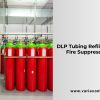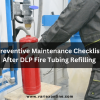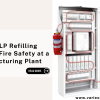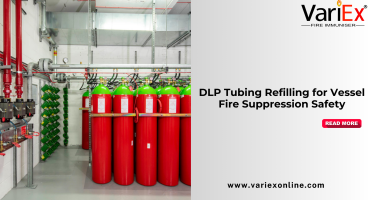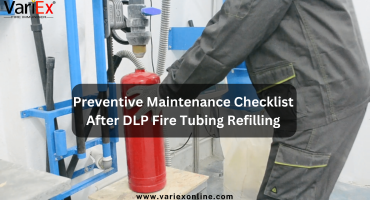Fire extinguishers are essential tools in combating fires, and among the most common types is the water fire extinguisher. Simple, effective, and easy to use, these extinguishers are primarily designed to tackle Class A fires involving solid combustibles like wood, paper, and fabric. This guide delves deep into the uses, benefits, limitations, advanced features, and maintenance of water fire extinguishers, offering a comprehensive understanding of their role in fire safety.
What Are Water Fire Extinguishers?
Water fire extinguishers are one of the oldest and most straightforward forms of fire suppression. They work by spraying water onto the fire, cooling the burning material below its ignition point, and preventing the fire from reigniting. These extinguishers are eco-friendly, cost-effective, and ideal for use in residential, commercial, and certain industrial settings.
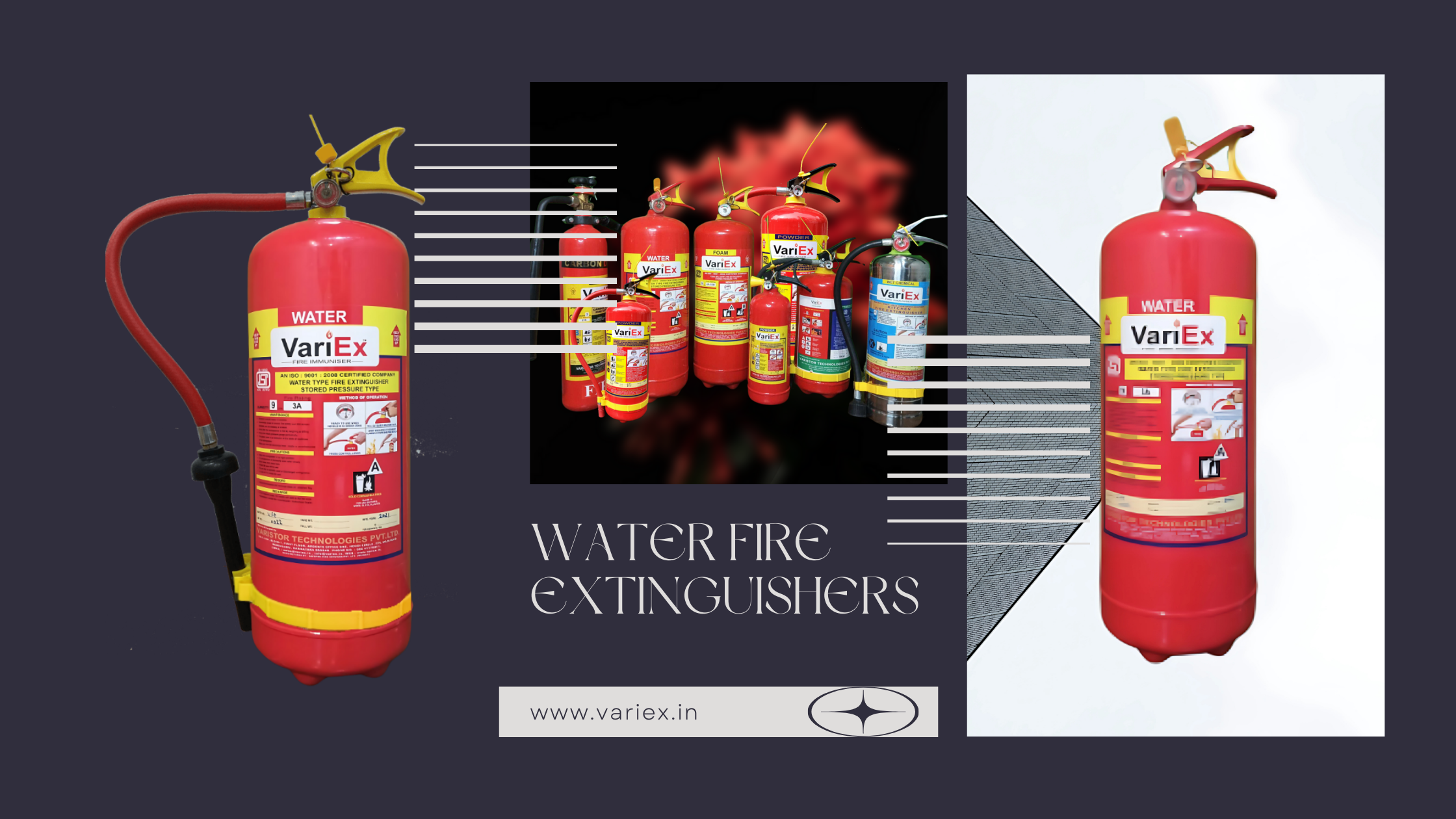
Composition and Mechanism:
- Water fire extinguishers are filled with water and pressurized using air or nitrogen.
- When activated, the pressurized water is expelled through the nozzle in a targeted stream, soaking the fire and its surrounding area to prevent its spread.
Types of Water Fire Extinguishers
There are several types of water fire extinguishers, each tailored for specific applications:
1. Standard Water Fire Extinguishers:
- These extinguishers use plain water to extinguish fires.
- Best suited for environments where Class A fire risks are prevalent.
2. Water Mist Fire Extinguishers:
- These use fine water droplets to cool the fire and reduce oxygen in the vicinity.
- They are safer around electrical equipment due to minimal conductivity risk.
3. Water Spray Fire Extinguishers:
- Equipped with a nozzle that produces a directed spray.
- Provides better coverage and penetrates deeper into the burning material.
4. Water Additive Fire Extinguishers:
- Contain water mixed with a chemical additive to increase effectiveness.
- More efficient in suppressing Class A fires and reducing water usage.
Uses of Water Fire Extinguishers
Water fire extinguishers are versatile tools with specific applications in fire safety:
1. Class A Fires:
- Water extinguishers are most effective against fires involving solid combustibles like:
- They work by cooling the burning material and halting the combustion process.
2. Residential Spaces:
- Ideal for use in homes to combat fires originating from furniture, curtains, or clothing.
3. Commercial Environments:
- Commonly found in offices, schools, and retail spaces where solid combustibles are prevalent.
4. Public Spaces:
- Used in theaters, museums, and other public areas to protect against accidental fires involving decorations or displays.
Advantages of Water Fire Extinguishers
Water fire extinguishers offer several benefits that make them a popular choice for fire safety:
1. Eco-Friendly:
- Water is a natural, non-toxic extinguishing agent with no harmful effects on the environment.
2. Cost-Effective:
- These extinguishers are affordable to purchase and maintain, making them accessible for most users.
3. Simple and Safe to Use:
- User-friendly design ensures that even untrained individuals can operate them effectively during emergencies.
4. Residue-Free:
- Unlike powder or foam extinguishers, water leaves no residue, simplifying cleanup after use.
5. Effective for Class A Fires:
- Provides efficient suppression for fires involving solid combustibles.
Limitations of Water Fire Extinguishers
Despite their advantages, water fire extinguishers have specific limitations:
1. Not Suitable for Class B, C, D, or K Fires:
- Ineffective against flammable liquids (Class B), electrical fires (Class C), combustible metals (Class D), and kitchen fires (Class K).
2. Risk of Electrical Shock:
- Water conducts electricity, making these extinguishers unsafe for use on fires involving live electrical equipment unless labeled as safe for such use.
3. Limited Application:
- Their use is restricted to environments where Class A fire risks are predominant.
How to Use Water Fire Extinguishers
Using a water fire extinguisher effectively requires understanding its operation and adhering to basic safety guidelines. Follow the PASS Method for safe and efficient use:
Step-by-Step Guide:
- Pull the Pin:
- Remove the safety pin to unlock the extinguisher.
- Aim the Nozzle:
- Direct the nozzle at the base of the fire to attack its source.
- Squeeze the Handle:
- Press the handle to release a steady stream of water.
- Sweep Side to Side:
- Move the nozzle from side to side, covering the entire area of the fire until it is extinguished.
Safety Tips:
- Maintain a safe distance from the fire, typically 6 to 8 feet.
- Ensure the fire is primarily Class A and avoid using water on flammable liquids or electrical equipment.
Special Features of Water Fire Extinguishers
1. Simplicity in Design:
- Straightforward construction ensures reliability and ease of use in emergencies.
2. Pressurized Delivery:
- High-pressure systems ensure effective coverage of the fire and surrounding areas.
3. Long Range:
- Some water extinguishers can discharge water up to 15 feet, allowing safe operation from a distance.
4. Extended Discharge Time:
- Offers prolonged discharge compared to other extinguishers, ensuring thorough suppression.
5. Versatility in Nozzle Options:
- Modern water extinguishers come with adjustable nozzles for spray or mist modes.
Maintenance of Water Fire Extinguishers
Proper maintenance is essential to ensure the reliability and effectiveness of water fire extinguishers. Follow these guidelines for optimal performance:
1. Regular Inspections:
- Conduct monthly visual checks to identify physical damage, leaks, or pressure issues.
2. Annual Servicing:
- Have the extinguisher professionally inspected and serviced at least once a year.
3. Hydrostatic Testing:
- Periodic pressure testing of the cylinder ensures it can withstand operational stresses.
4. Refilling and Recharging:
- Refill the extinguisher promptly after use or when the water level is low.
5. Proper Storage:
- Store the extinguisher in a cool, dry place away from direct sunlight or corrosive substances.
Advanced Features in Modern Water Fire Extinguishers
Technological advancements have improved the functionality and versatility of water fire extinguishers:
1. Water Mist Technology:
- Produces fine water droplets that reduce oxygen in the vicinity, improving fire suppression efficiency.
2. Additive-Based Extinguishers:
- Enhanced with chemical additives for quicker fire suppression and reduced water usage.
3. Environmentally Friendly Design:
- Some models use recycled materials for their construction, promoting sustainability.
4. Smart Monitoring Systems:
- Integrated sensors monitor pressure and water levels, alerting users to maintenance needs.
Applications of Water Fire Extinguishers
Water fire extinguishers are widely used in environments where Class A fire risks are prevalent:
1. Residential Settings:
- Ideal for homes, apartments, and dormitories to combat fires involving furniture or clothing.
2. Educational Institutions:
- Used in schools and universities to protect classrooms, libraries, and other facilities.
3. Healthcare Facilities:
- Common in hospitals and clinics to address fires involving non-electrical materials.
4. Retail and Commercial Spaces:
- Protect shops, malls, and offices from accidental fires involving packaging materials.
5. Public Buildings:
- Deployed in museums, theaters, and government offices for comprehensive fire safety.
Comparison with Other Fire Extinguishers
| Feature | Water Fire Extinguishers | Foam Fire Extinguishers | Dry Chemical Extinguishers |
|---|
| Primary Fire Class | Class A | Class A, B | Class A, B, C |
| Residue Left Behind | None | Foam Residue | Powder Residue |
| Environmentally Friendly | Yes | Moderate | Moderate |
| Cost | Low | Moderate | Low to Moderate |
Conclusion
Water fire extinguishers remain one of the most reliable and eco-friendly tools for combating Class A fires. Their simplicity, cost-effectiveness, and residue-free operation make them indispensable in various settings, from homes to commercial spaces. By understanding their uses, limitations, and maintenance requirements, users can ensure they are well-prepared to handle fire emergencies effectively. Investing in water fire extinguishers is a proactive step toward creating a safer and more sustainable environment.



